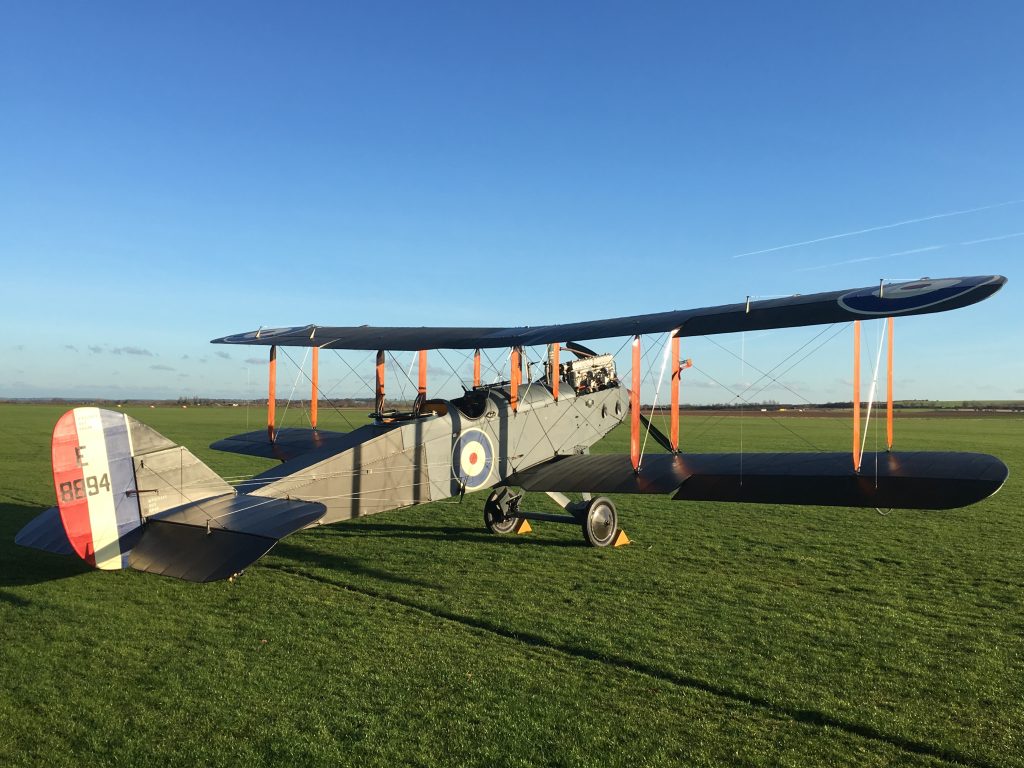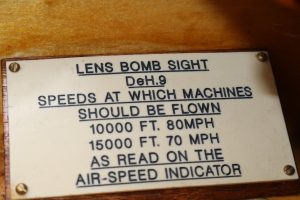A feature on one of the aircraft in the HAA’s National Treasures register.

Airco DH9
The Royal Air Force was formed in on April 1st 1918 and was the world’s first independent air force. It was created in response to the Zeppelin and Gotha aerial attacks on Britain. However with the end of the First World War in November 1918 there was no longer a need for a force of 22,647 aircraft and 198 squadrons. By 1920 the RAF comprised only 28 squadrons, 21 overseas and with 8 for home defence. As Britain faced severe post war austerity, the reduction of funding for the Armed Forces caused inevitable inter-service conflict for the resources available.
Minister of War and the Air, and later Colonial Secretary Winston Churchill was looking for a means to police the expanded British Empire, with its new mandates from the Treaty of Versailles. Chief of the Air Staff Trenchard was looking for a means for the RAF to survive, a perfect storm of interdependency. Both had to make do with what they had; Churchill how to get the job done – “cheaply’”, and Trenchard the opportunity he was looking for to protect the RAF.
Somaliland – the Catalyst for the survival of the RAF
Trenchard had suggested to Churchill that the RAF could “subdue a festering uprising in Somaliland” and said “why not leave the whole thing to us?” . The Somali religious leader ‘The Mad Mullah’ Mohammed Abdulla Hassan – known at the time as “neither mad nor a Mullah”, had long been a thorn in the side of British Empire forces.
The use of aircraft to police the empire, whilst being a major shift in the use of armed forces, was the only option available given the state of Britain’s finances and the distances involved.
The de Havilland 9 – DH9 – with its 18 litre 200 horsepower Siddeley Puma or BHP engine – had been unsuccessful serving on the Western Front, but in a region such as Somaliland, as with other areas of the British Empire, there was no aerial opposition.

Note bombsight in the cockpit floor
On 21 January 1920 the 12 DH9s started to operate out of a temporary airfield at Berbera and bombed Mohammed Hassan’s base at Medistie and fort at Jedeli whose forces fled to the hills in terror. In five days the DH9s destroyed three forts and provided air support for the ground forces moving in, tactics that exist in air power to this day. Also notable was that one DH9 was converted as an air ambulance.

Cockpit placard for bombsight
The Somaliland operation, which was over in less than three weeks, signalled the RAF’s success to the British Government who were in desperate search for a cheap means to police the empire. The activities of the ‘Mad Mullah’ was put to an end by a few bomber aircraft in three weeks. The total cost, including some support from the King’s African Rifles worked out at £77,000 and was known in government as “the cheapest war in history”. An army campaign would have cost millions. However one cheap victory would not be enough, and the RAF had to find regular work to earn its keep – but the DH9 and Somaliland had shown the way ahead and was a turning point as it moved on to the new role of Air Control.
The Somaliland Campaign highlighted this new role for the RAF and the DH9 had made this possible and thus can be regarded as “the aircraft that saved the RAF”.
There is one surviving airworthy DH9 which is based with the Historic Aircraft Collection at Duxford and is appropriately in the Top Ten of HAA’s “National Treasures’ list.

DH9 on the line at Duxford
Howard Cook
2021
.
